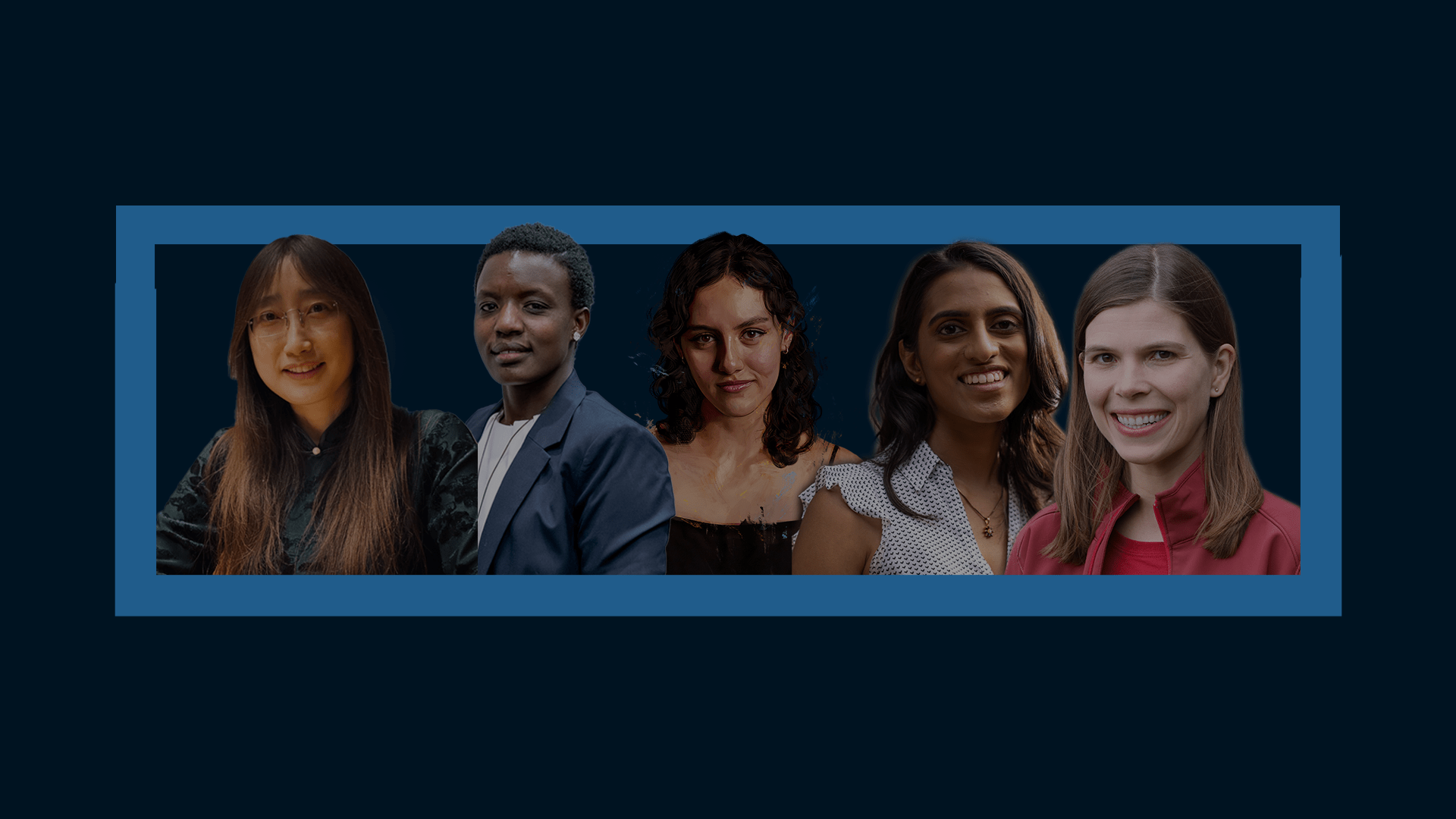

International Women and Girls in Science Day 2023
What was already a troubling level of representation of women in science, technology, engineering and mathematics (STEM) before the pandemic, has only intensified over the past few years. Several studies have found that women have published fewer papers, led fewer clinical trials and received less recognition for their expertise during the pandemic. This is not a new discrepancy: women have historically been systematically excluded from opportunities and careers in STEM fields. Men greatly outnumber women majoring in most STEM paths in college, and women are vastly underrepresented in the highest paying positions in computer science and engineering, making up only 28% of the STEM workforce more broadly.
Even within these fields, biases and discriminatory practices make it especially difficult for women to succeed. Women are typically given smaller research grants than their male colleagues, and, while they represent 33.3% of all researchers, only 12% of members of national science academies are women. While there has been progress made toward increasing the representation of women in STEM, they remain populated predominantly by, and run by, men. Due to these barriers, we are losing out on vital perspectives and networks of talent that could help solve the world’s most crucial problems.
At Schmidt Futures, we seek to build a network of the sharpest minds on Earth — helping them solve hard problems in science and society by connecting them across fields, bringing multiple types of capital to bear, and applying modern tools and technology thoughtfully. However, we are also keenly aware that there are barriers in place that are impeding many demographics of talent, such as women, from realizing their full potential.
We are committed to ensuring that our mission recognizes the disparities that exist in the work that we support. In honor of National Women and Girls in Science Day, we are highlighting some of the magnificent female-identifying individuals in STEM that we support. Read about them below:
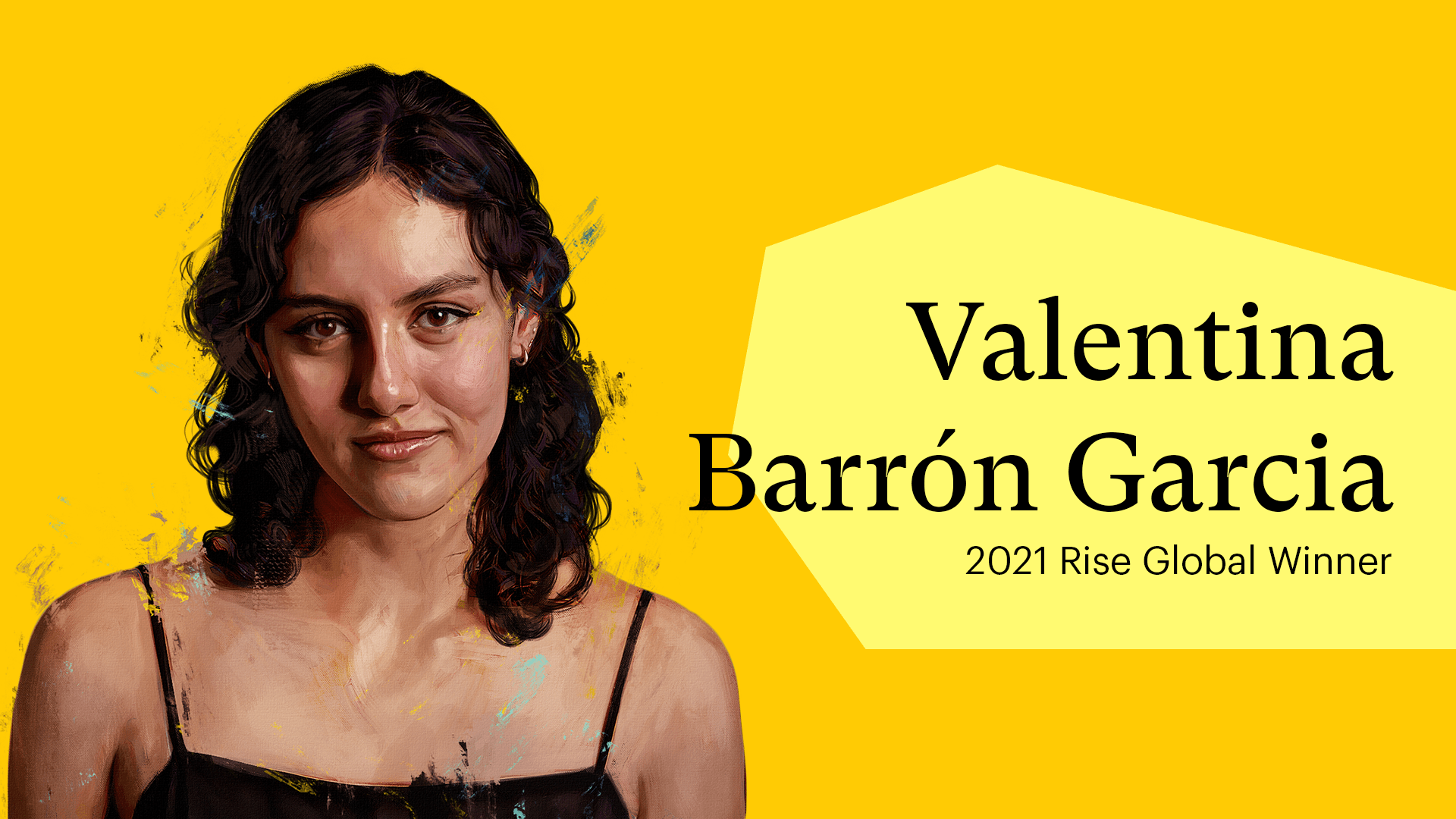
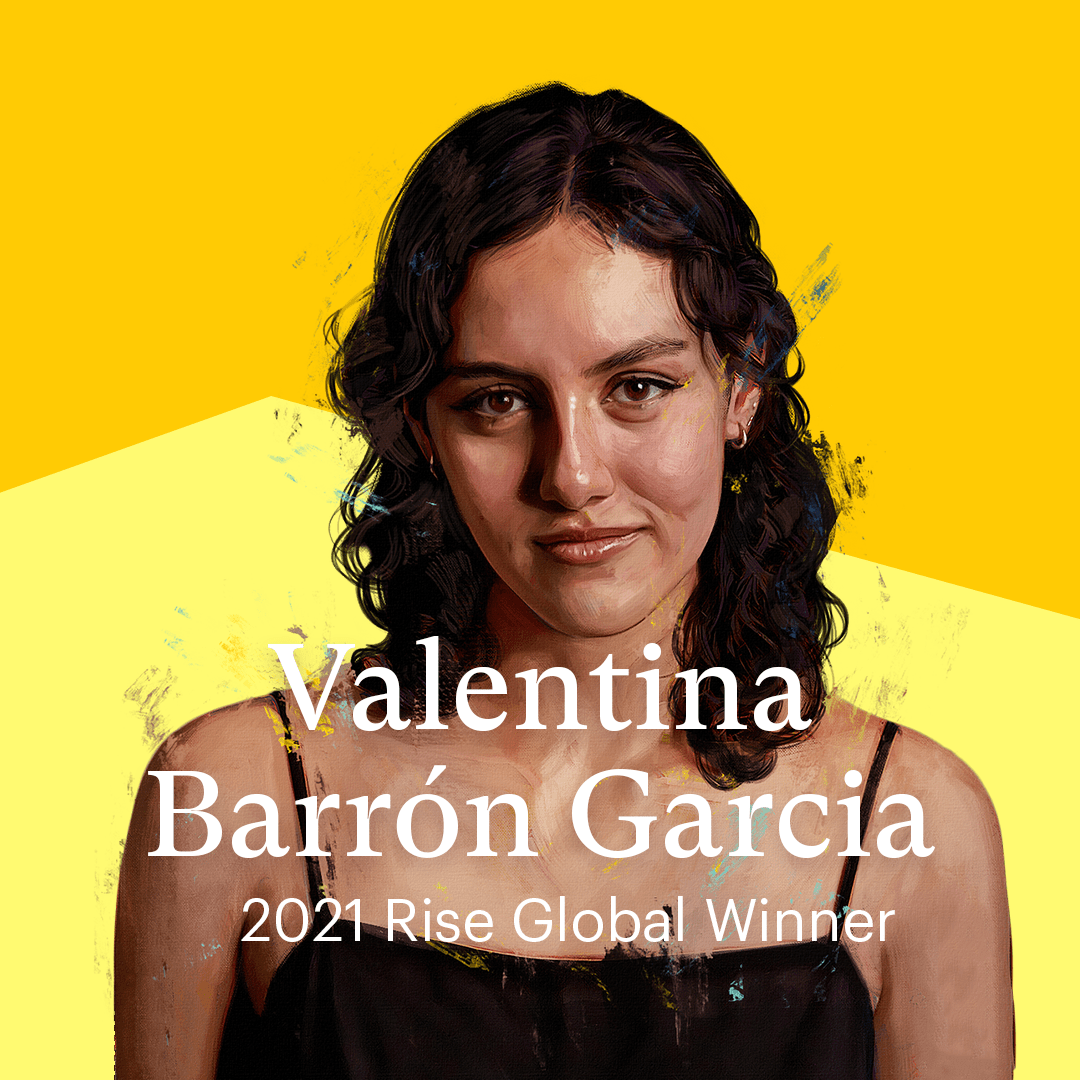
Visualizing a sustainable and accessible food system future
Valentina Barrón García was fortunate enough to be able to harvest some of her own food in her hometown in central Mexico. But growing up, she was well aware that access to land and the resources necessary to grow sustainable food crops was not a luxury that everyone could afford.
“The experience of growing my own crops since I was little led to my interest in making sustainable living strategies for people that don’t have access to them,” she says. Barrón García took this knowledge and used the opportunity of being a Rise Global Winner to design and prototype a solar-powered hydroponic system made of low-cost, recyclable materials. It utilizes rainwater through a pump and compost fertilizer to grow pesticide-free fruit and vegetables. She believes her creation could offer almost anyone their own affordable and renewable food source. In particular, she hopes that it can help to provide sustainable nutrition to food-insecure communities and the most vulnerable groups among them, like seniors who may find it difficult to buy their own groceries.
“They have a lot of dependency on their relatives,” she says. “So they may lack adequate nutrition because they are unable to go buy food, [especially] if they live in rural areas.”
Now a university student, 19-year-old Barrón García is marrying her interest in addressing food insecurity with a love of drawing by studying sustainable architecture. She is also a strong believer that we must increase the visualization of women succeeding in science and technology.
“In my own experience, I can say that if young females start seeing more role models they can identify with, eventually they will find inspiration in them and visualize themselves doing the same. Not to mention that even today there’s still ongoing gender bias in developing societies, which definitely steps in the way of gender equality in STEM.”
Given the boundaries in the field, Barrón García highly values the mentors she’s had throughout her life, who have always encouraged her to reach higher and share what she has learned. She has learned to be positive and self-assured, reminding others to
“Be confident about themselves, their values and their capabilities. Don’t let anyone change your mind on that.”
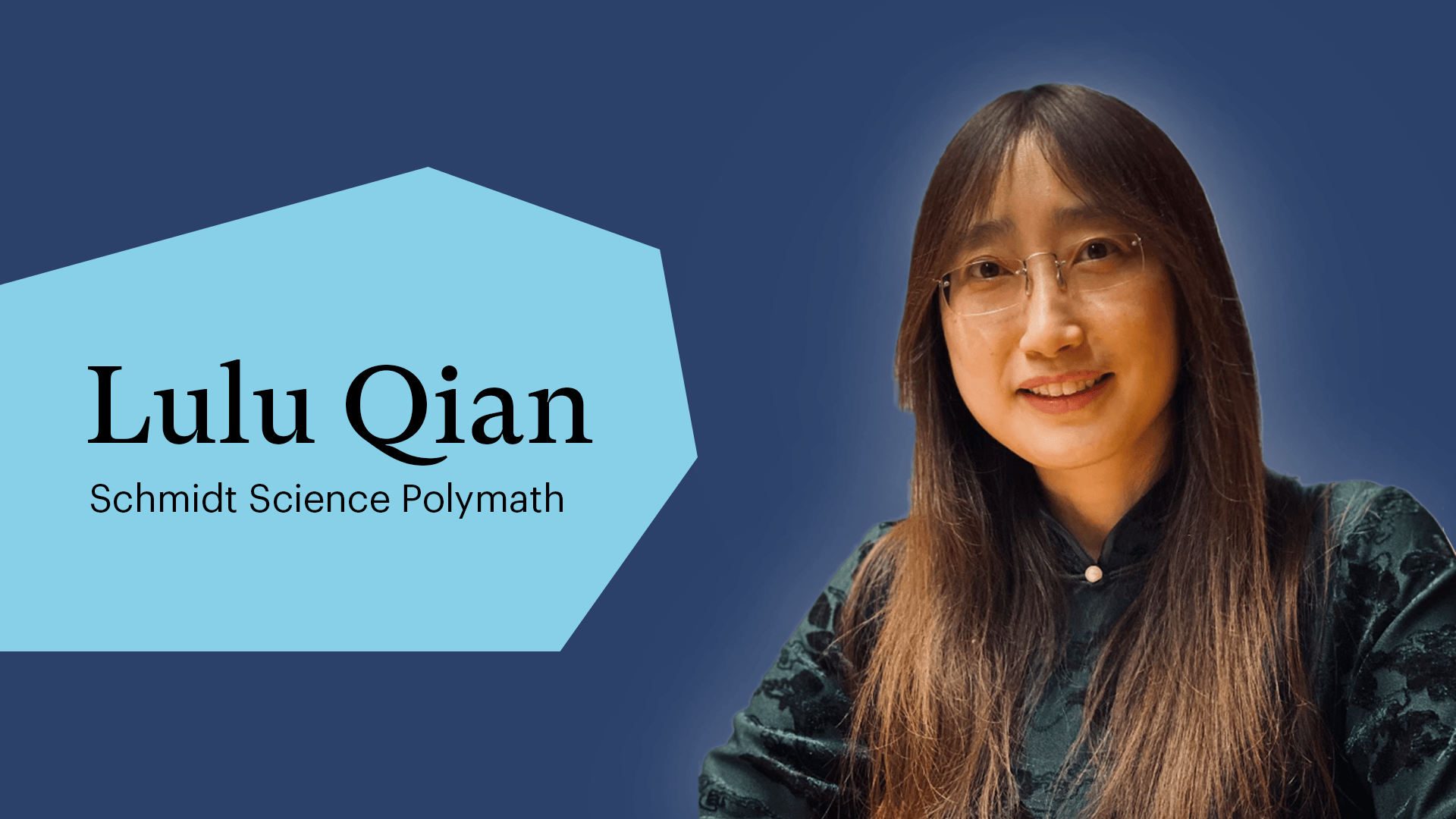
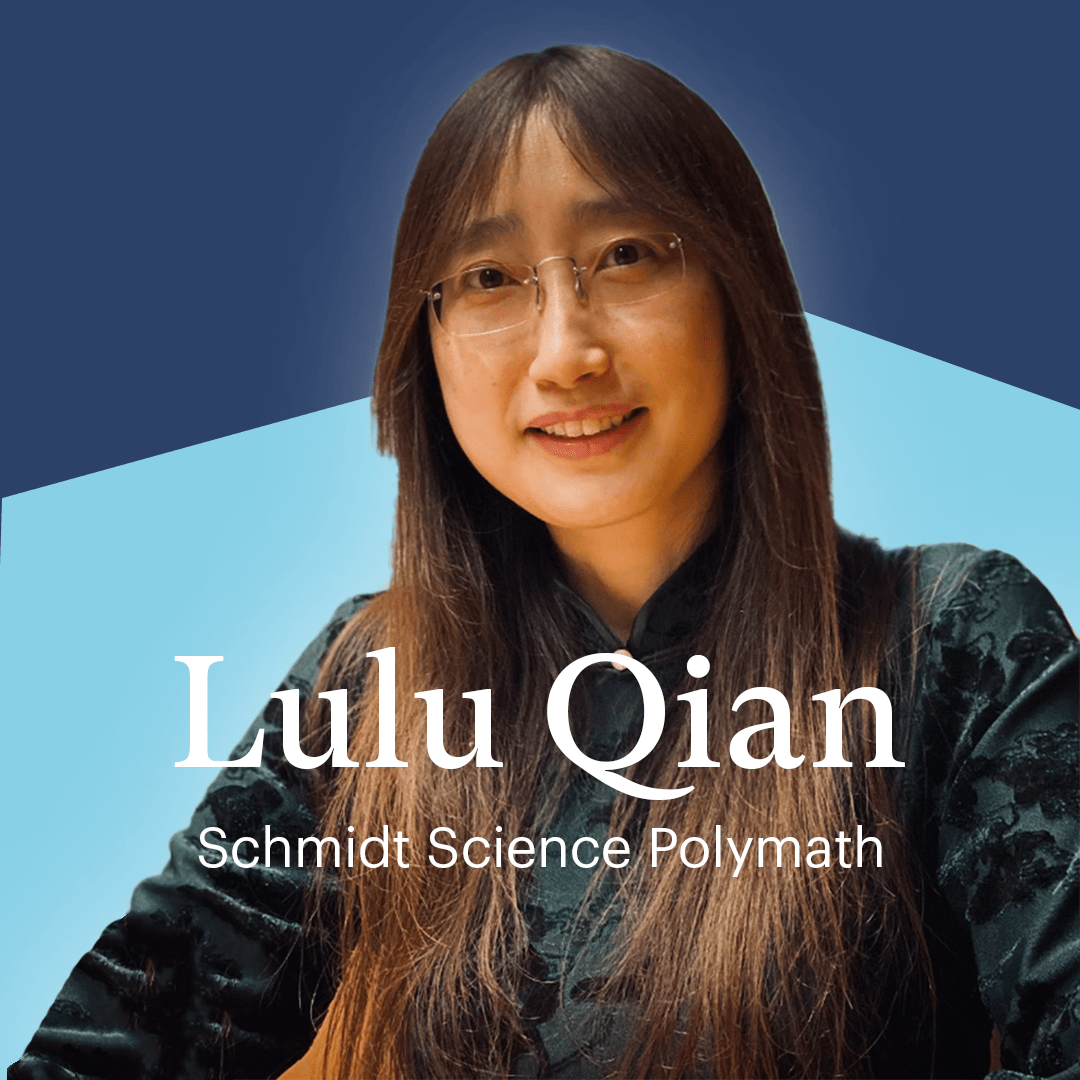
The Future of Machinery: Molecules and DNA
Life is a program, written by nature and carried out by molecules.
Such a pragmatic observation might feel void of the mysticism that has inflected our worldview for centuries, but it’s a point of view that has guided Dr. Lulu Qian’s larger scale thinking in pursuit of building molecular machines that may help to solve the world’s hardest scientific problems.
Dr. Qian is a bioengineer who has spent her career researching and advancing molecular programming, a field that’s similar to computer programming, but that utilizes DNA to activate and instruct molecules to take specific actions, as opposed to the 1’s and 0’s that fire pixels and guide computers. In one type of theoretical application, molecular programming could be used to breathe life-like features into non-living objects. Imagine a car that is able to transform its appearance by rearranging its molecular structure, or physical products that can repair themselves after being damaged, or a chemotherapy treatment programmed to differentiate between cancerous and non-cancerous cells and attack accordingly so that its negative effects are minimized. While many of these applications are a long ways away, the possibilities of molecular programming stand to impact almost every industry and field of science.
As a Schmidt Science Polymath, Dr. Qian is focused on researching how artificial molecular machines can be programmed to learn from their environment and become “smarter” over their lifetimes. In particular, Dr. Qian is interested in how heat can power different types of enzyme-free molecular circuits to process information and make decisions in response to a changing molecular environment while maintaining robust performance over time.
As Dr. Qian pursues these incredibly complex challenges, she also encourages others to not be afraid to go after the things that inspire you:
“Do what keeps you excited instead of what keeps you safe. There are risks that one must take to pursue one’s dream. Invent your own path and follow in no one’s footsteps. Look for inspiration, don’t look for approval. This is the advice that I would give to anyone, as the important thing her is to not let your identity prevent you from making the right decisions that keep your passion alive.”
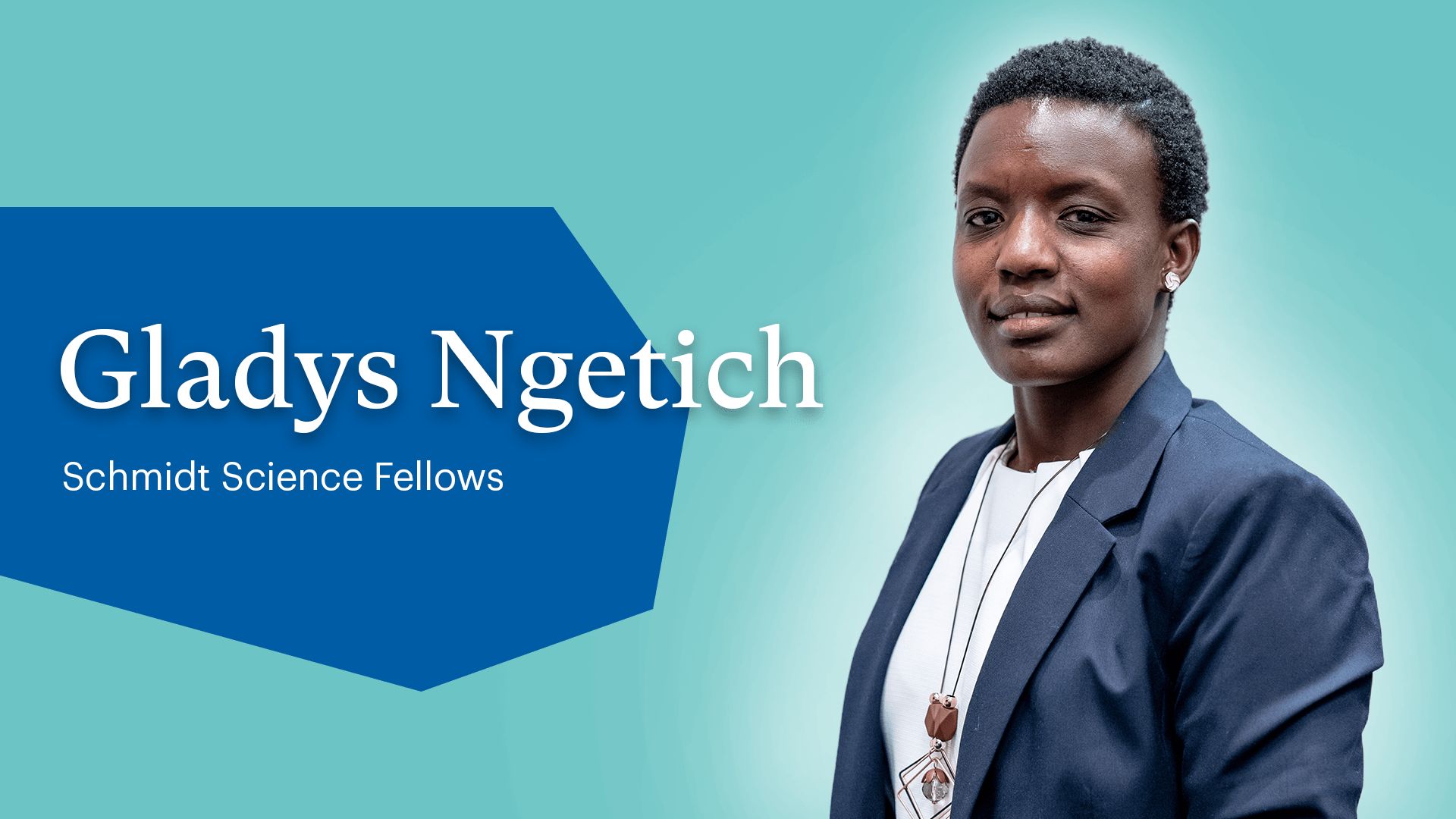
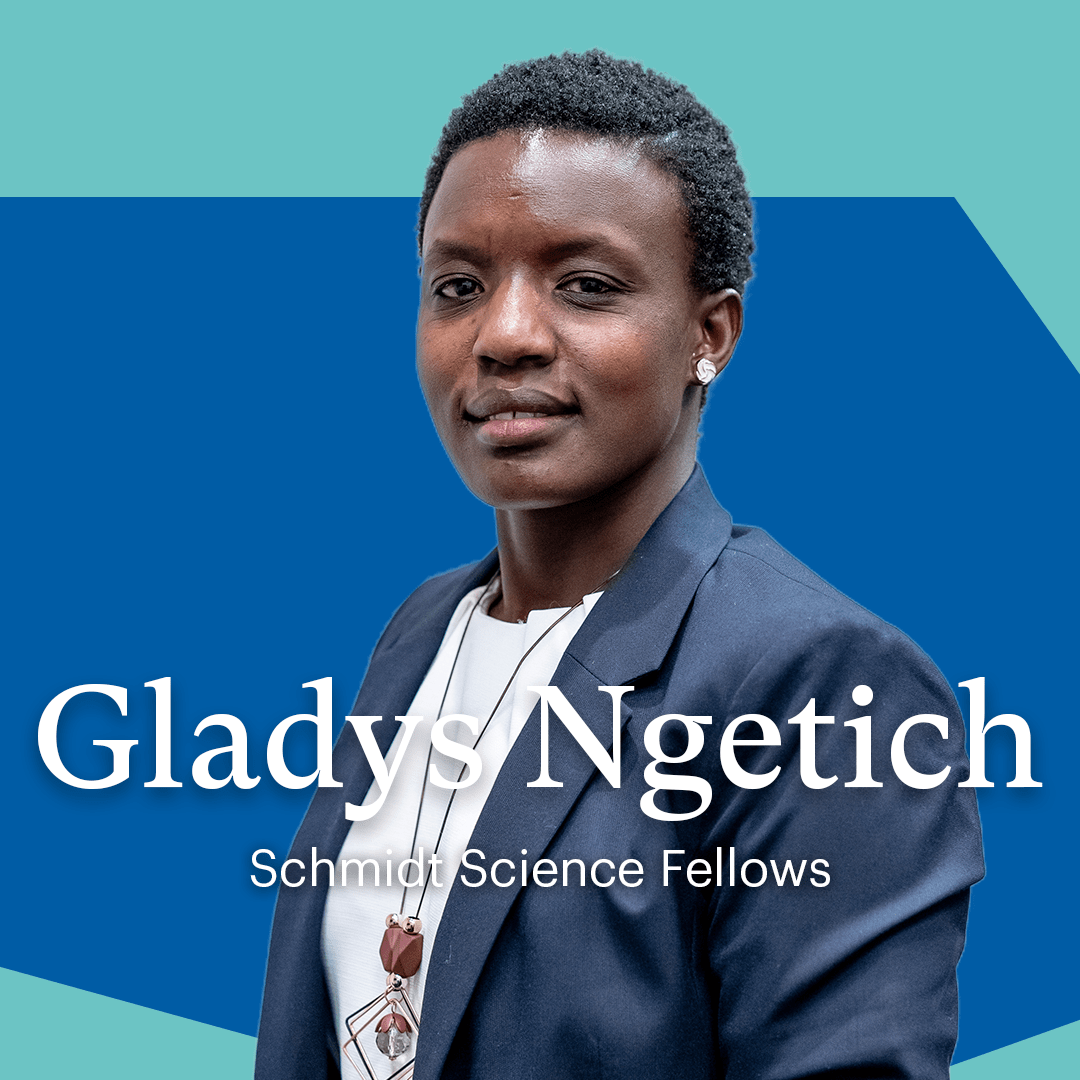
Scaling space innovation around the world with eco-friendly fuels
Something as small as a bee can power something as large as a rocket. If we use beeswax, which is reusable, as fuel for sustainable rockets and satellites, Gladys Ngetich believes the world will change for the better.
As an engineer, Gladys began researching advanced cooling technologies for jet engines with the aim of developing them to be more efficient and less environmentally damaging. She was born and raised in a relatively under-resourced part of Kenya — with low standards of living and lacking access to quality education and sustainable energy. Her work as an engineer quickly became heavily driven by her first-hand experiences in her home country. Ngetich realized that she wanted to change the lives of people she loves, so she shifted her focus from aerospace to the use of space to address local problems that the people closest to her are facing all the time.
“My biggest dream is for eco-friendly fuels for satellites to be accessible to nations around the world that were previously not space faring, and for them to use that fuel to send their own satellites to space. That would be my happiness.”
In addition to the inequality that Ngetich seeks to tackle with science and engineering, is the inequality within the fields themselves.
“I have a lot of opportunities that girls where I come from, don’t have. And that realization forces me to strive for more. Being a black woman in engineering, I have met people who comment ‘You do not look like an engineer.’ My advice for girls interested in engineering is that engineering is not a preserve of a select few. If you have a curious mind and like to find solutions to problems, you are in the right place. Turn a deaf ear to those who might discourage you, stay.”
“If I can make a dent, or if I can make the world a better place… that would be my dream.”
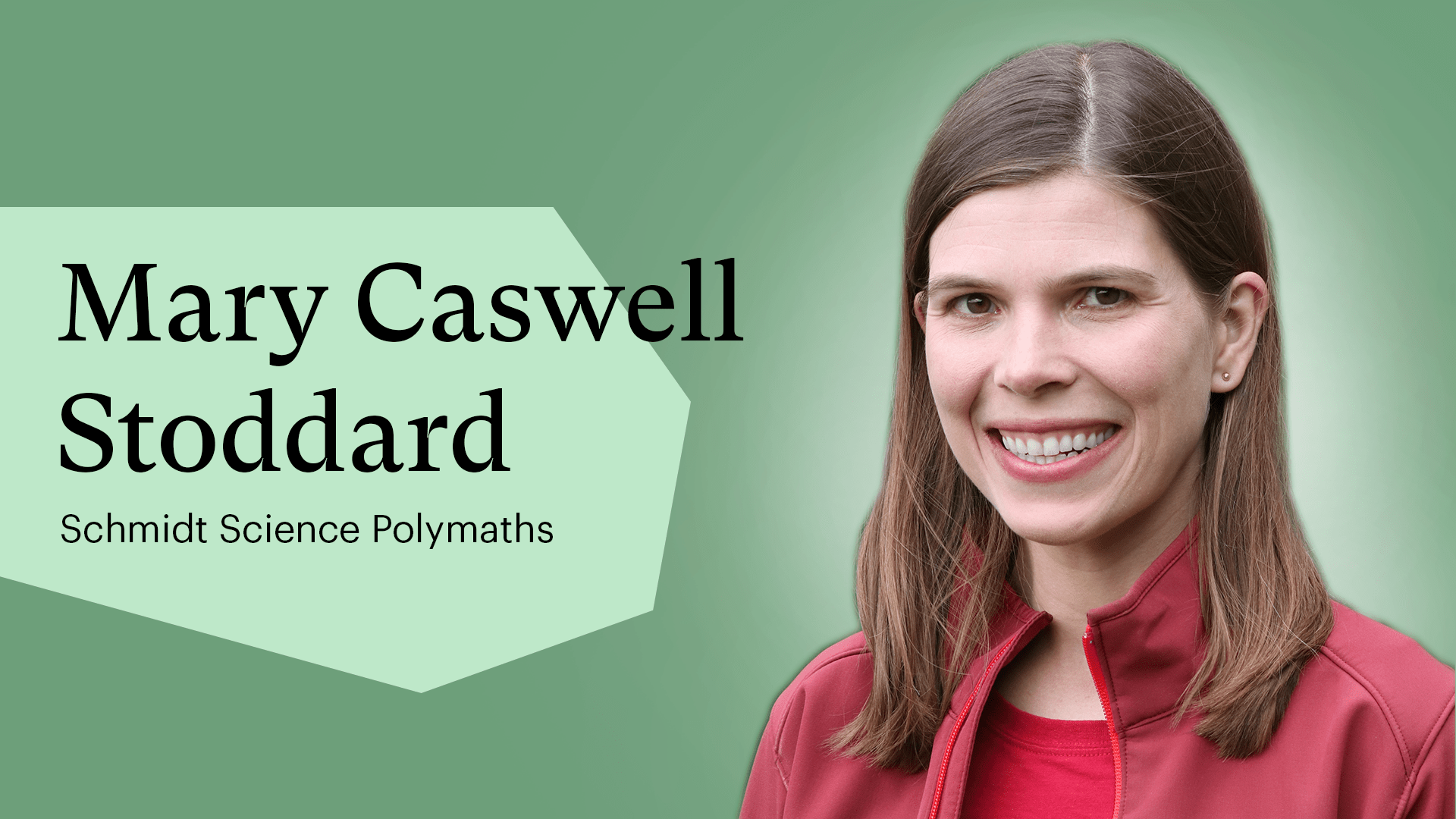
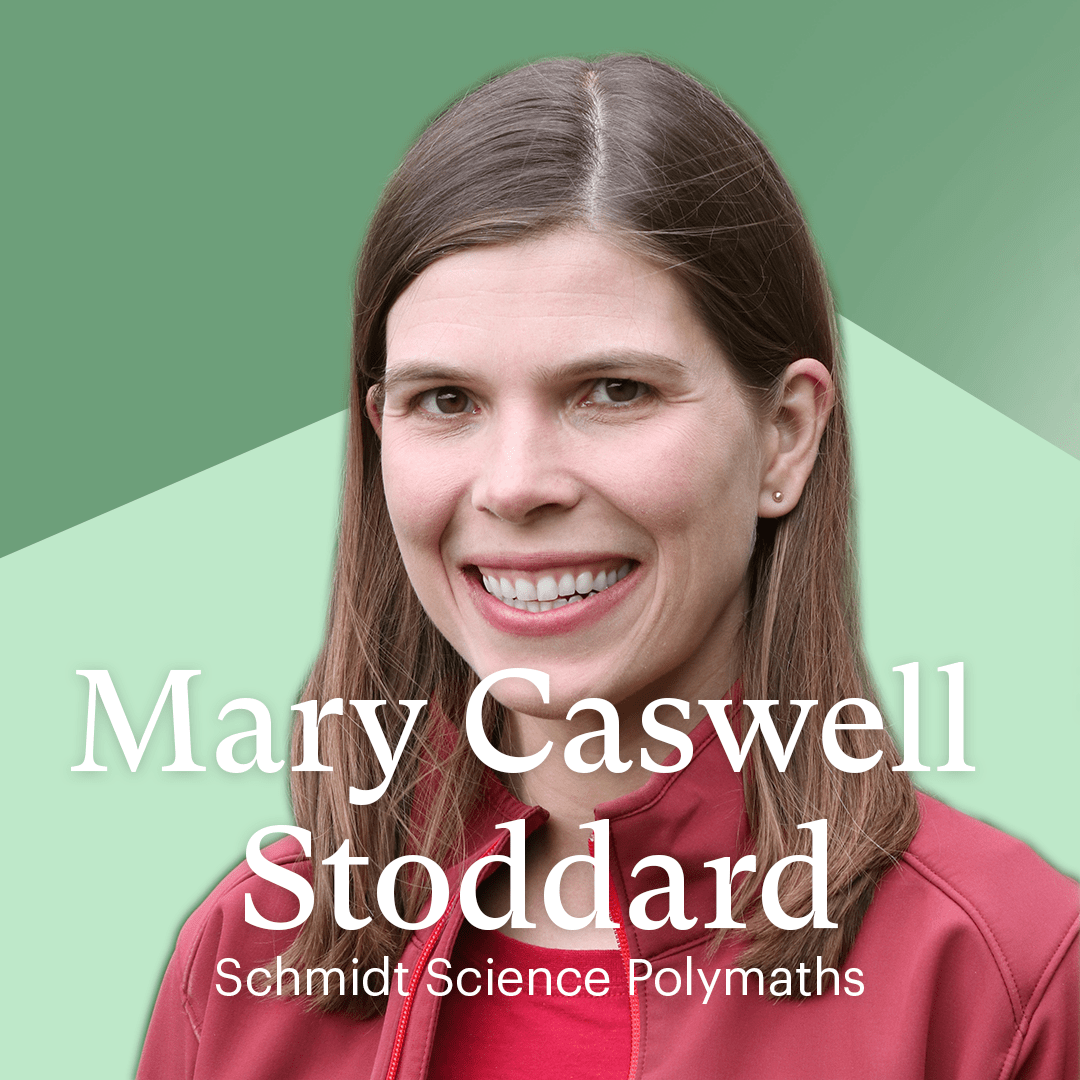
More than meets the eye: exploring the hidden sensory world of ornithology.
Dr. Mary Caswell Stoddard’s interest in the natural world took flight from an early age. As a young girl, her mother and grandmother taught Mary to identify birds, and her fascination with ornithology henceforth ensued. During her freshman year in college, Dr. Stoddard enrolled in a seminar course that allowed her access to the ornithology collections at the Natural History Museum. It was through these collections that she learned two things that would ultimately inspire a career dedicated to researching the rich sensory world of birds: 1) that birds can see spectrums of colors undetectable by the human eye, and 2) that it is possible to measure these mysterious colors. “That idea that you could quantify, measure and tap into a sensory world of other animals even when it’s beyond the sensory experience of humans really excited me and captured my imagination.”
As an Associate Professor in the Princeton Department of Ecology and Evolutionary Biology, Dr. Stoddard uses a multidisciplinary approach –– inclusive of developing software tools, new imaging and optimal equipment –– to investigate bird coloration and color vision, as well as the evolution and engineering of avian eggs. Among the many questions her team has sought to answer are: why do bird eggs come in such a variety of shapes? How do birds use color perception to guide their behaviors in the wild? What are the functions of eggshell color and patterning? Her research has led to intriguing discoveries. A large comparative analysis study that Dr. Stoddard conducted in 2017 found that a bird’s flight ability is correlated with egg shape (the pointier the egg, the better the flier, the more spherical the egg, the shorter and lower-powered the bird’s glide is), for example. Another study found that hummingbirds can discriminate between up to five non-spectral colors, even though humans can only perceive one non-spectral color (purple).
A Schmidt Science Polymaths grantee, Dr. Stoddard is currently focused on studying hummingbirds in the Colorado Rockies to better understand how their interactions between wildflowers and other pollinators stand to be threatened by climate change. She is also studying the mechanical properties of bird eggshells, which evolved to be both tough and breakable. Unraveling the eggshell’s properties could lead to the design of novel materials with unique mechanical features.
Having outstanding mentors –– including several strong female role models –– has played an important role in Dr. Stoddard’s success as a scientist. She suggests that the most important thing for someone pursuing a career in STEM (especially if they plan to study the natural world) is to get outside and cultivate one’s passion for the wild:
“My advice to girls just starting to think about a career in STEM would be to get outside and pay attention to nature. There are apps—like iNaturalist’s Seek and the Cornell Lab of Ornithology’s Merlin—that make it easier than ever to start exploring the natural world. To solve the huge challenges facing us now—climate change, food security, biodiversity loss—we need the next generation to help protect and preserve the natural world. I would also advise young scientists to learn to write computer code. Coding is becoming an essential part of being a good researcher, and it’s never too soon to start.”
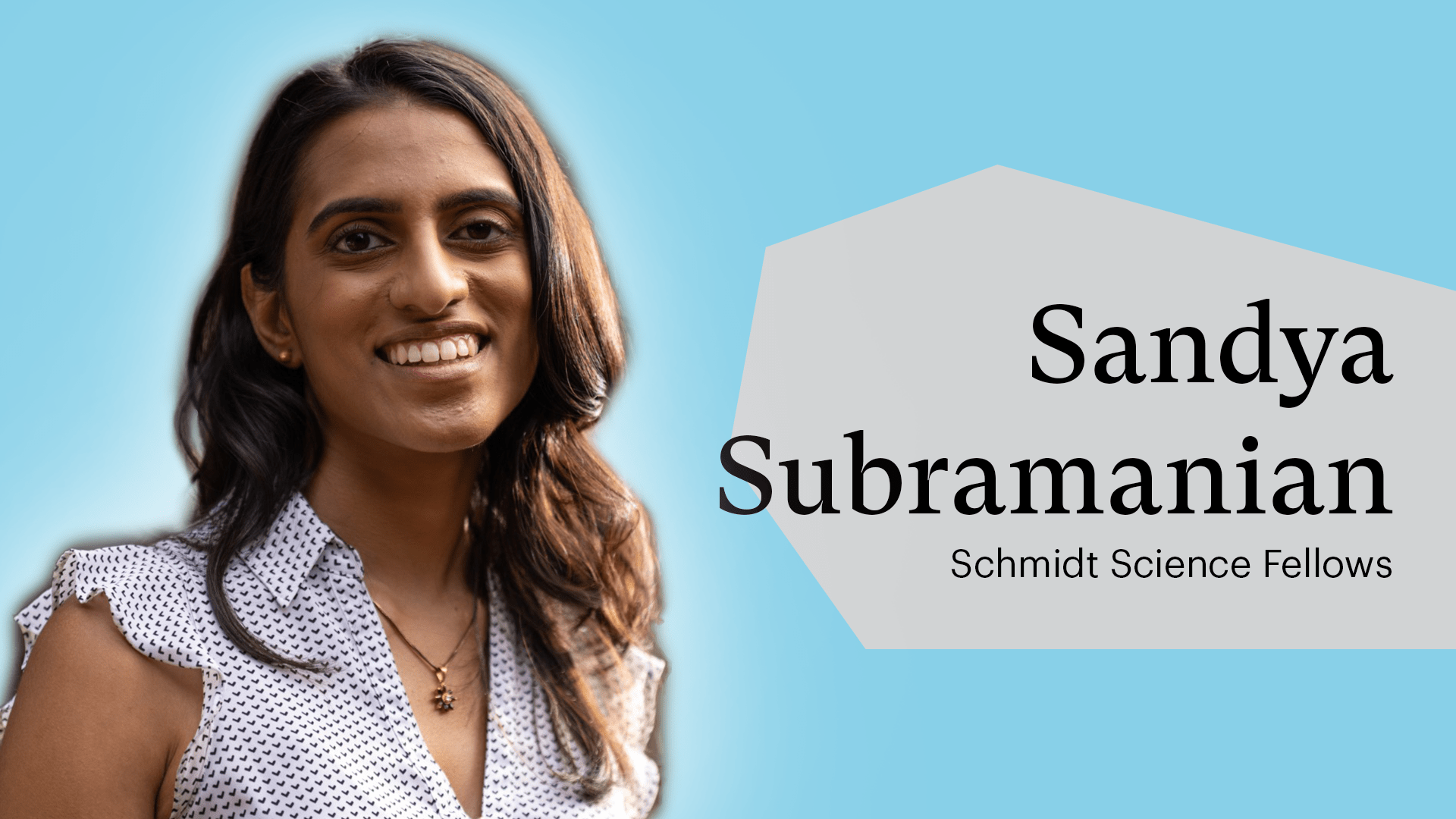
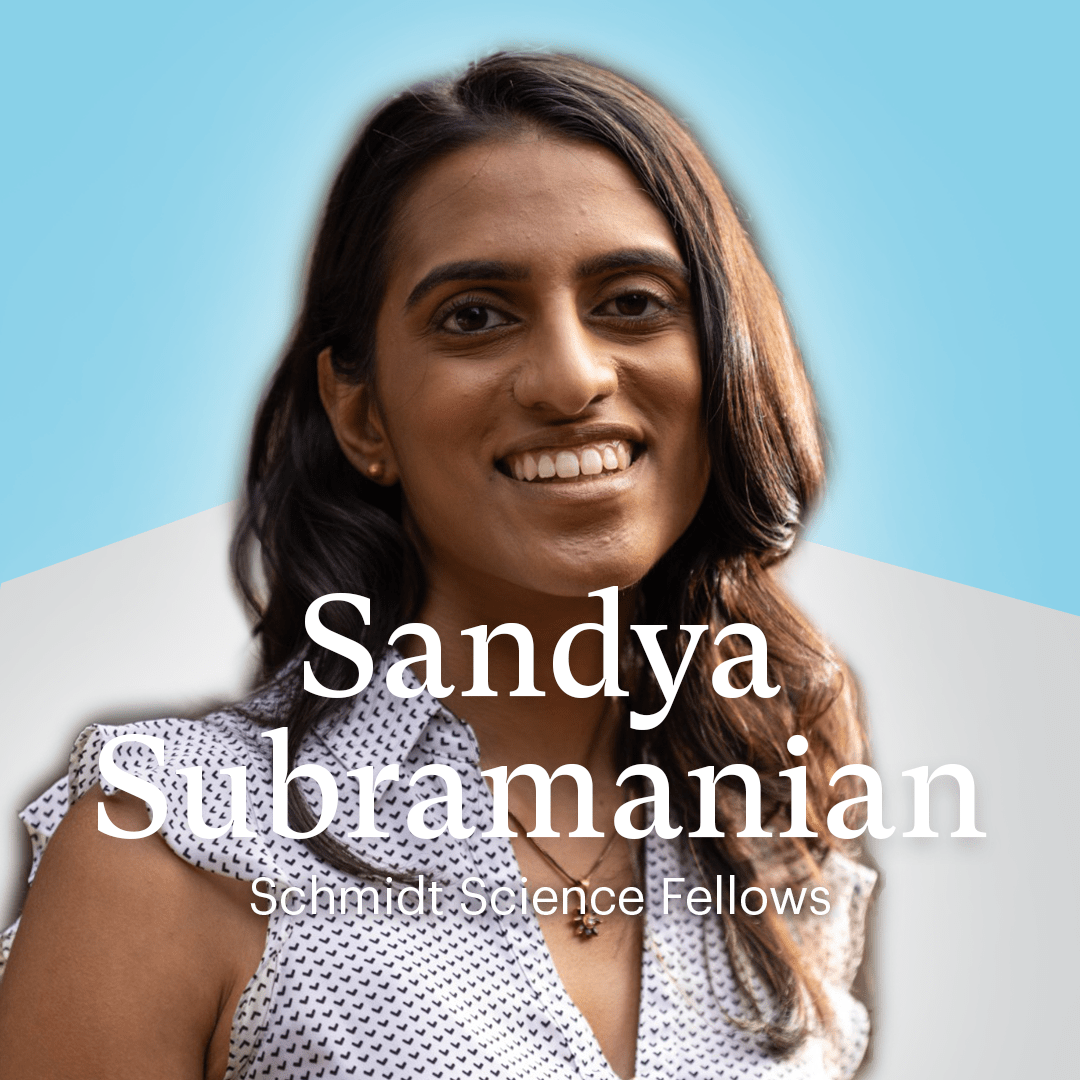
Engineering the next generation of wearable monitoring systems
Imagine a world where a doctor can send you home with a small device that could detect what’s happening in your body in multiple locations at all times. Imagine if that doctor could then use that information to tailor your treatment so that it is optimal for your specific body.
Schmidt Science Fellow Sandya Subrmanian is working to design a system that can do this. She is engineering the next generation of at-home, non-invasive wearable monitoring systems and computational models for inference, to better manage and treat chronic diseases like migraines and Parkinson’s disease. The current prototype of the system, which would live on the stomach, tracks heart rate and digestive activity. A second part of it on the ankle tracks microscopic sweating activity and movement.
Sandya’s research focuses specifically on the autonomic nervous system, which is the part of the body responsible for everything we don’t think about — our breathing, heart rate, digestion. Because it has this involuntary role, it interfaces with every other system in our bodies, and is therefore implicated in a variety of complex and often chronic diseases (such as migraines, and Parkinson’s disease) that manifest in individual people very differently. So, if we can understand what’s going on in the autonomic nervous system, we can understand why people have different sets of systems and how doctors can treat them. However, this requires new computational models because we cannot measure the autonomic nervous system directly, only its downstream effects throughout the body.
“You can’t really relay to your doctor how you feel throughout the day through a 20 minute doctor’s appointment, but if you have the ability to get relevant data 24/7, the doctor can get a snapshot of that person’s lived experience and you are able to get a much richer picture of what’s happening” subramanian says.
During her PhD, Sandya investigated the process of unconscious pain in patients under general anesthesia by tracking autonomic nervous system responses using statistical modeling and machine learning.
Sandya is now working with Professor Todd Coleman and Professor Sean Mackey to build an ambulatory physiological monitoring system for the autonomic nervous system to test in chronic migraine patients. She hopes the development of these technologies and accompanying computational models will help guide a new era of digital health in which clinicians have access to data and insights gathered at home, with the help of technology, to personalize therapeutic and management strategies for each patient.
On top of her work on solving these challenges and hopefully improving medical decision making, Subramanian cares equally about her impact on her mentees. “If any of them, especially the women, are inspired to pursue science or STEM more broadly and even 1% of that has something to do with me, I’ll take that as a win as well.” She is immensely passionate about the power that a good mentor can have, particularly for women in a male dominated field.
“The importance of mentors is really a recurring theme for me, but we need to have more mentors who are specifically interested in mentoring women in STEM. These mentors don’t have to be women. My most influential mentors are men and women who have made it a goal of their careers to help lift up as many women in research and STEM as possible.”
